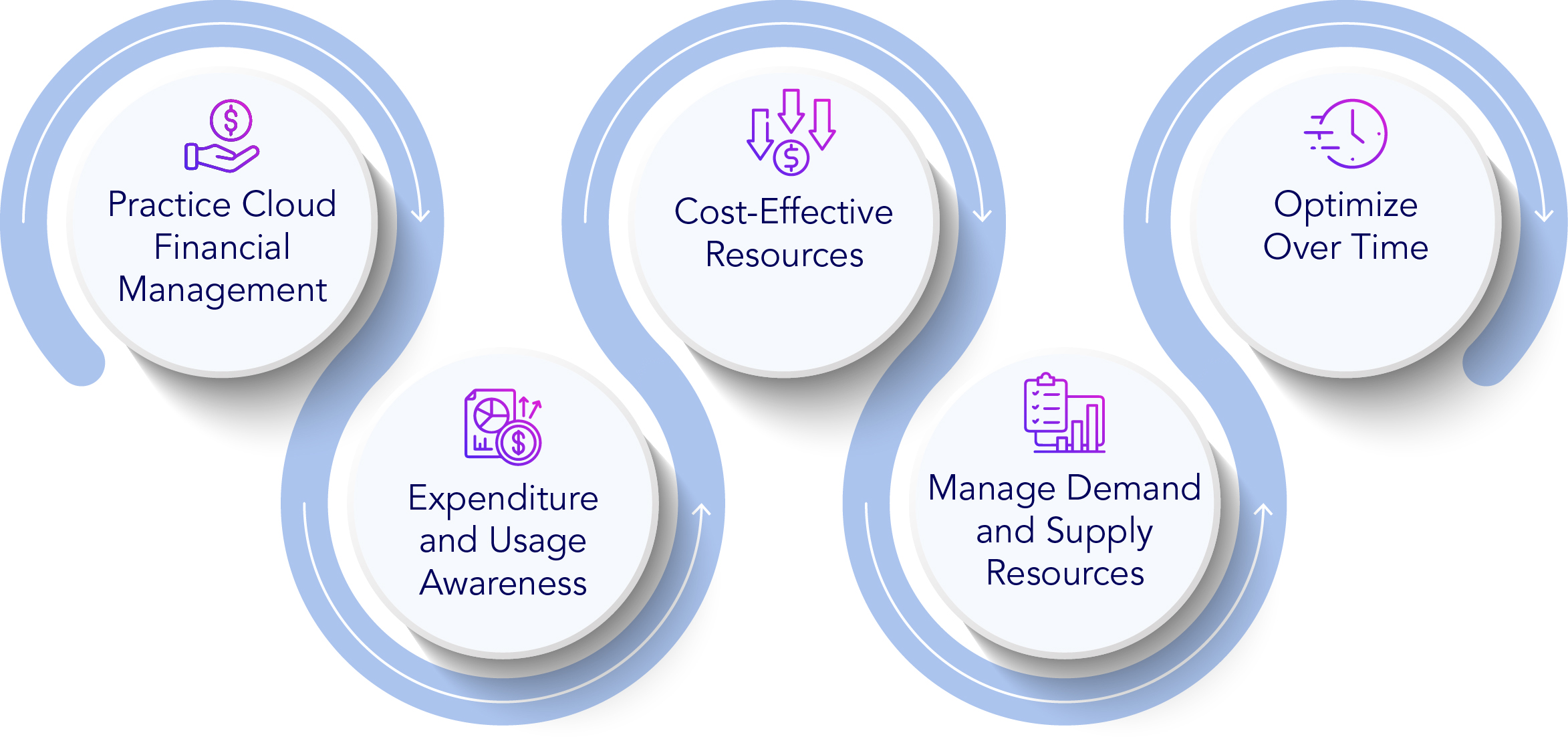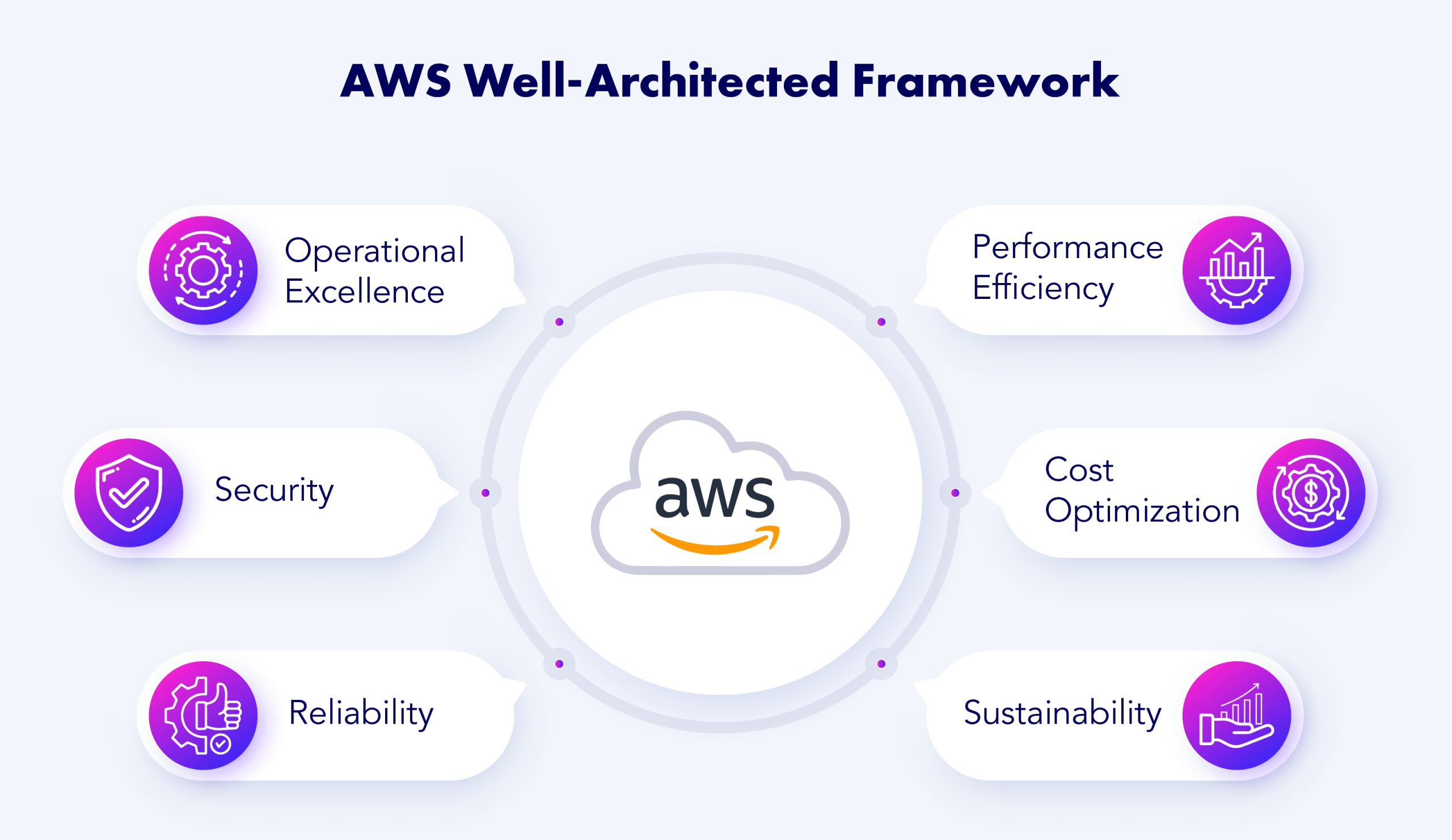The AWS Well-Architected Framework is instrumental in aiding organizations to make informed decisions while constructing workloads on AWS. It is centered around six pillars: Operational Excellence, Security, Reliability, Performance Efficiency, Cost Optimization, and Sustainability.
In this article we will focus on the Cost Optimization pillar, demonstrating how organizations can architect their workloads for efficient service and resource utilization to attain business goals at minimal costs.
Design Principles for Cost Optimization
Cost optimization is not a one-time task but rather a continuous journey throughout the workload’s lifecycle. It is essential to construct and manage cost-aware workloads to minimize costs and increase return on investment. AWS helps lift the burden of infrastructure management, allowing organizations to focus more on customers and business projects.
In order to achieve cost optimization, there are some vital design principles to be followed:
Implement Cloud Financial Management: Develop an internal capability, or work with an experienced partner, in managing technology and usage to become a cost-efficient organization.
Adopt a Consumption Model: Put the appropriate processes and procedures in place to ensure only the required computing resources are being consumed, with usage adjusted to support evolving business requirements.
Measure Overall Efficiency: Understand business output and associated costs to improve functionality and cost efficiency.
Avoid Undifferentiated Heavy Lifting: Focus on core business needs rather than IT infrastructure, letting AWS do the heavy lifting of data center operations.
Analyze and Attribute Expenditure: Establish process to accurately identify cost and resource usage, allowing for transparent attribution of IT costs to revenue streams and, ultimately, accurately reflecting ROI.
Focus Areas for Cost Optimization in the Cloud
Practice Cloud Financial Management
Practicing cloud financial management involves evolving existing finance processes to achieve cost transparency, control, planning, and optimization in AWS environments. Traditional finance models – when applied to dynamic cloud usage – can result in inaccurate planning and less visibility, eventually leading to lost opportunities to control and optimize costs effectively. To avoid such pitfalls, active cost management is crucial throughout the cloud journey, whether building natively in the cloud, migrating workloads, or expanding cloud service adoption.
Expenditure and Usage Awareness
Possessing a thorough understanding of your organization’s costs and drivers is crucial. It allows for effective management of resource cost and usage, revealing opportunities for cost reduction. It is essential to attribute resource costs accurately to different organizational units, workloads, or product owners, promoting efficient usage behavior and reducing waste. This understanding also enables more informed decisions about resource allocation within the organization, driving changes in usage and subsequently, in cost. A multi-faceted approach involving data gathering, analysis, and reporting is crucial for maintaining awareness of usage and expenditures.
Cost-Effective Resources
Deploying appropriate services, resources, and configurations is fundamental to cost savings. Leveraging resources such as AWS Solutions Architects, AWS Solutions, AWS Reference Architectures, and APN Partners can aid in choosing the most cost-effective architectures based on individual organizational needs and learnings.
Manage Demand and Supply Resources
In the cloud, paying only for what you need eliminates the necessity for costly overprovisioning, allowing resources to match the workload demand when needed. Managing the demand with tactics like throttling, buffering, or queuing can smooth demand and serve it with fewer resources. This balance should account for resource failures, high availability, and provision time, with metrics and automation ensuring minimal management effort even as you scale. Regular workload analysis is crucial to align supply with variable demand.
Optimize Over Time
Optimization in AWS involves the regular review of services and their implementation in your workload. Regularly reviewing architectural decisions in light of new service releases from AWS also ensures continued cost-effectiveness. Being proactive in decommissioning unnecessary resources, components, and workloads is pivotal. Evaluating the cost of effort for operations in the cloud, and automating time-consuming cloud operations can further reduce human efforts and cost.

Equally critical is the cultivation of a robust Cloud Financial Management (CFM) culture. The emphasis on cost-consciousness must permeate every level of the organization, particularly at the ground level where developers and dev teams are directly interacting with cloud resources. A vigilant approach in resource requests and management is essential to mitigate unnecessary costs. Additionally, implementing structured processes and procedures is essential, like shutting down idle developer-provisioned instances, ensuring waste minimization and closing operational gaps.
Conclusion
Cloud Financial Management and cost optimization is a continuous endeavor, requiring regular collaboration between finance and technology teams, and constant reviews and updates of architectural approaches and component selections. AWS offers a plethora of tools, techniques, and best practices, to minimize costs while building highly resilient, responsive, and adaptive deployments.
To truly capitalize on the economic benefits of the cloud, organizations need to internalize and apply these nuanced insights meticulously. Furthermore, aligning with an experienced partner, such as proSkale, can provide invaluable guidance and support in navigating the complexities of cloud financial management and cost optimization, ensuring a well-rounded and insightful approach to harnessing the full potential of AWS services.


